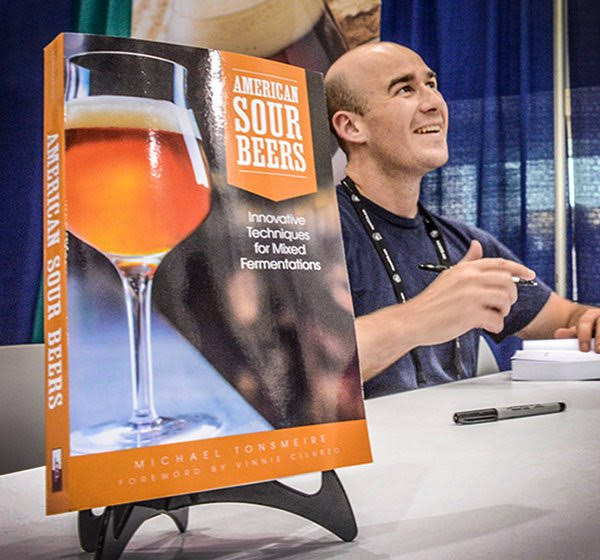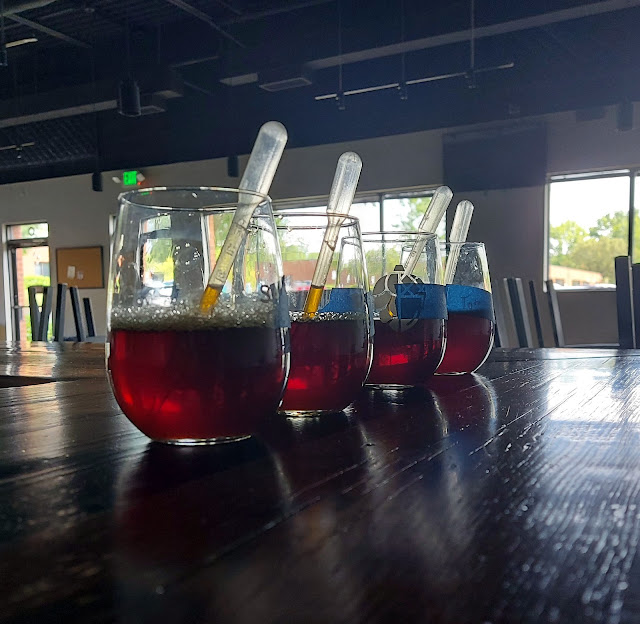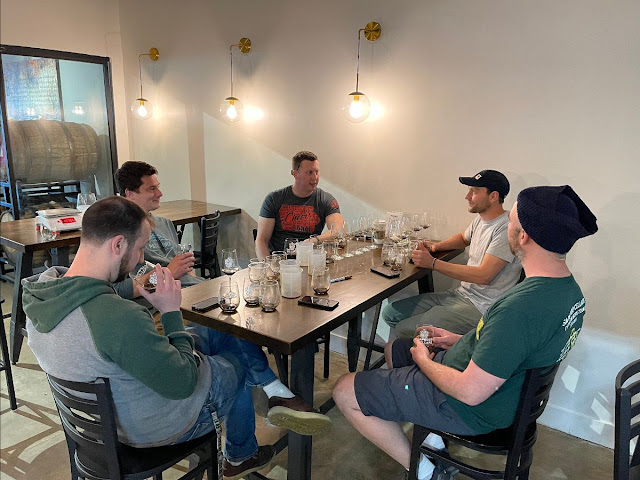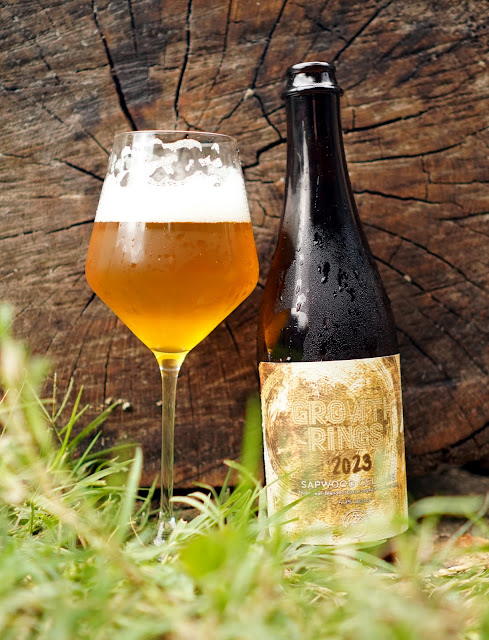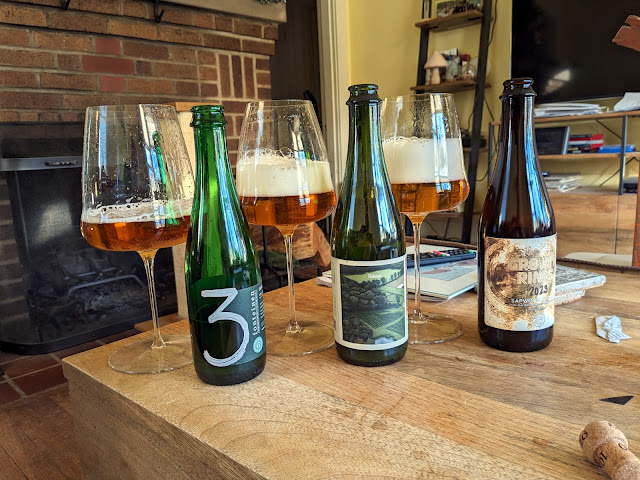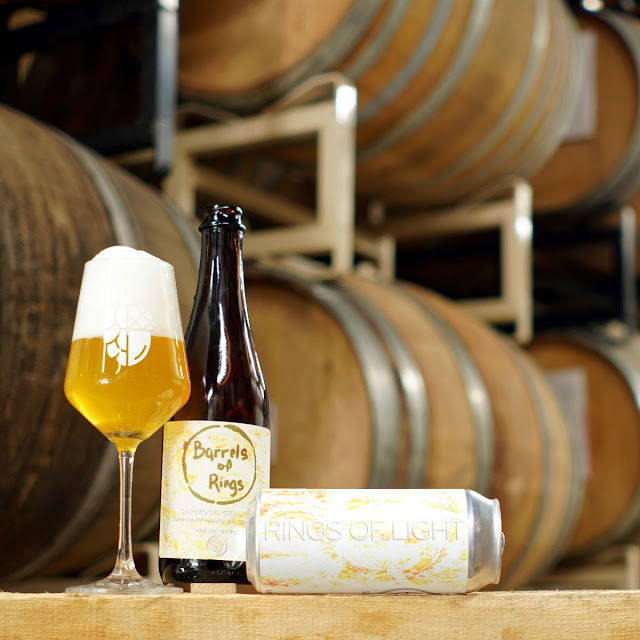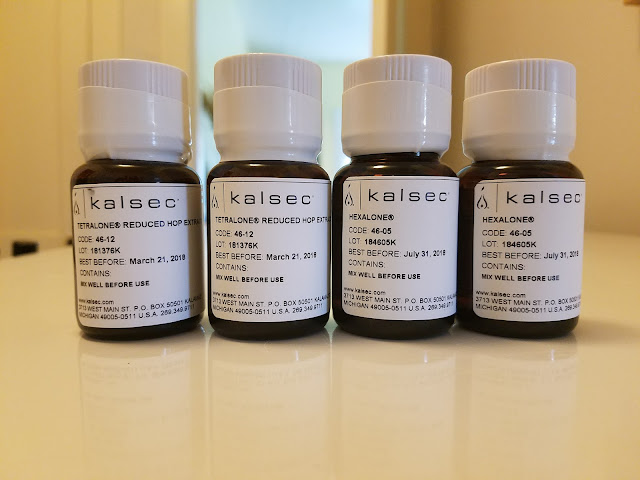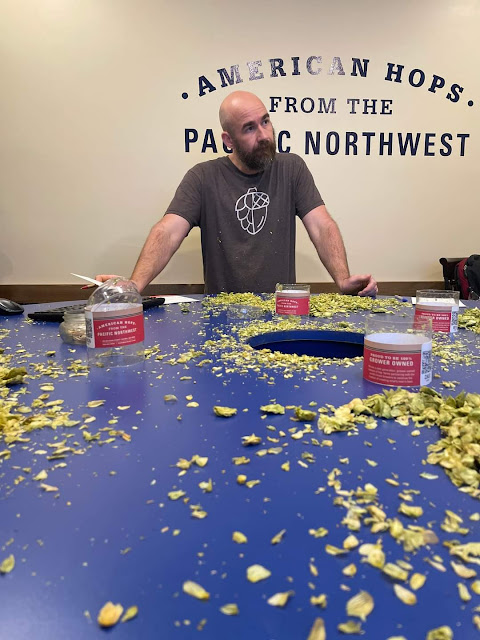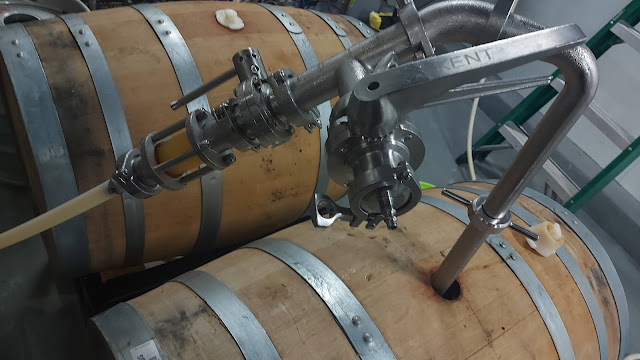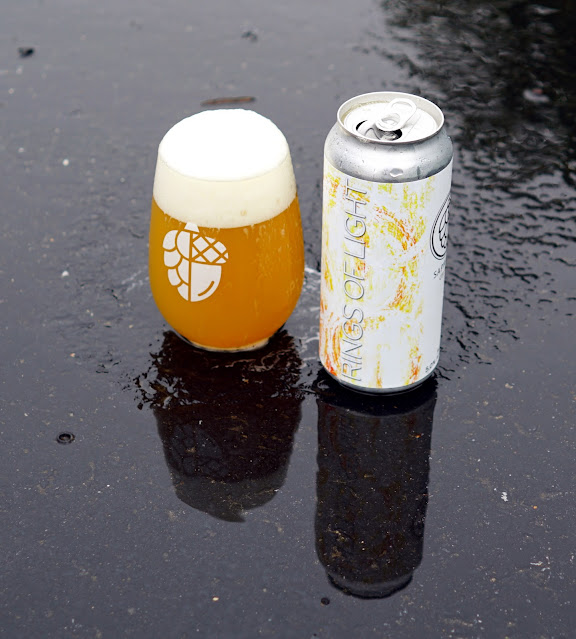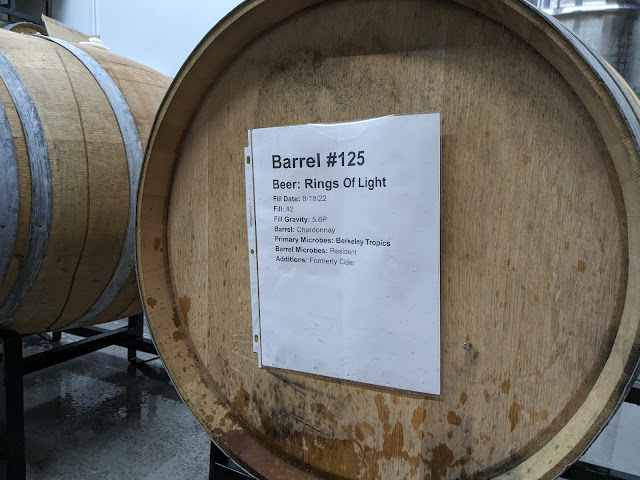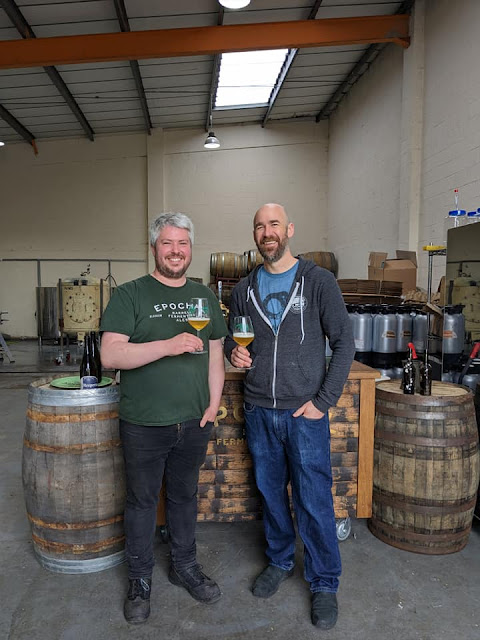brew
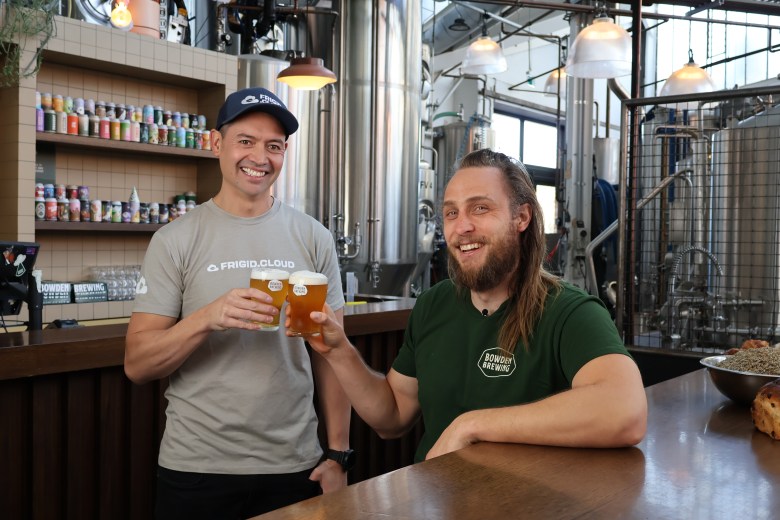 On Sunday 28 July, the brewery will showcase a limited-release brew at an event that celebrates sustainable practices in the industry.
On Sunday 28 July, the brewery will showcase a limited-release brew at an event that celebrates sustainable practices in the industry. The market is responding to the growing demand for flavorful, well crafted non-alcohol beer.
The post The NA Way: The Rise of Non-Alcohol Beer appeared first on CraftBeer.com.
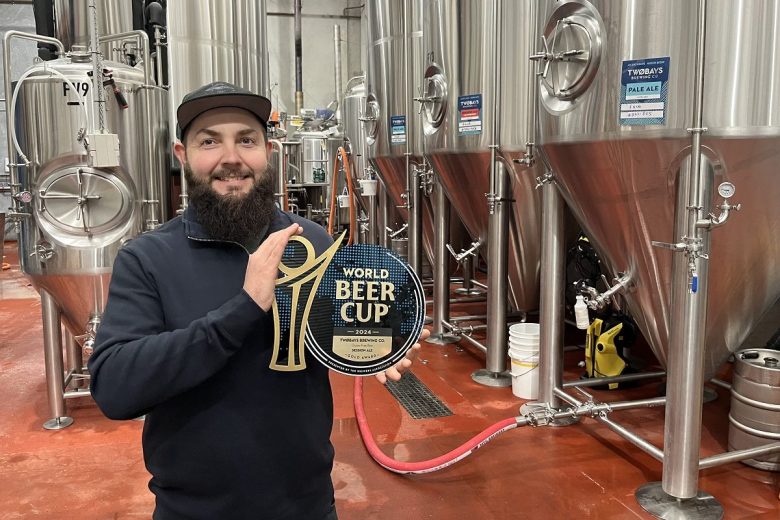 This week’s brewer spotlight highlights Kristian Martin, Head Brewer at dedicated gluten-free brewery Two Bays Brewing Co.
This week’s brewer spotlight highlights Kristian Martin, Head Brewer at dedicated gluten-free brewery Two Bays Brewing Co.  The partnership will continue to grow Brewmanity’s Melbourne presence, following the opening of its rooftop brewpub in March.
The partnership will continue to grow Brewmanity’s Melbourne presence, following the opening of its rooftop brewpub in March.  From Irish stout to hazy pale ales, Beer & Brewer rounds up the best non-alcoholic beers for Dry July.
From Irish stout to hazy pale ales, Beer & Brewer rounds up the best non-alcoholic beers for Dry July. 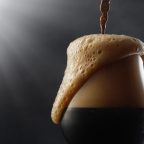 This week I take a look at fermentation considerations when brewing a very high gravity beer such as an Imperial Stout or Barley Wine. Last week in Part 1, I covered several methods for achieving a very high starting gravity. Selecting Your Yeast Now that you have a high gravity wort, you need to consider […]
This week I take a look at fermentation considerations when brewing a very high gravity beer such as an Imperial Stout or Barley Wine. Last week in Part 1, I covered several methods for achieving a very high starting gravity. Selecting Your Yeast Now that you have a high gravity wort, you need to consider […] Regardless of customs, environs, or condiments, beer is there to make a burger better.
The post Meat & Malt: Beer Makes Burgers Better appeared first on CraftBeer.com.
 Australian Beer Co’s Emma Walton shares lessons and highlights from 20 years of brewing experience across the UK and Australia.
Australian Beer Co’s Emma Walton shares lessons and highlights from 20 years of brewing experience across the UK and Australia. These movers and shakers are not only brewing top-notch beer, but are also making game-changing steps toward a craft beer industry that welcomes all.
The post Pride in Their Craft: LGBTQIA+ Brewers Build Community appeared first on CraftBeer.com.
 Scott Janish joins me this week to discuss mash hopping and steps he takes to control oxygen and enhance long term beer stability. Subscribe on iTunes to Audio version or Video version or Spotify or Google Play Download the MP3 File– Right Click and Save As to download this mp3 file. Your browser does not […]
Scott Janish joins me this week to discuss mash hopping and steps he takes to control oxygen and enhance long term beer stability. Subscribe on iTunes to Audio version or Video version or Spotify or Google Play Download the MP3 File– Right Click and Save As to download this mp3 file. Your browser does not […]  This week I take a look at the brewing of very high gravity beers to include styles like Barley Wines and extreme Imperial Stouts. These beers require somewhat special handling as it can be hard to achieve the very high starting gravity and a good fermentation, and in addition they often require extensive aging. Very […]
This week I take a look at the brewing of very high gravity beers to include styles like Barley Wines and extreme Imperial Stouts. These beers require somewhat special handling as it can be hard to achieve the very high starting gravity and a good fermentation, and in addition they often require extensive aging. Very […] 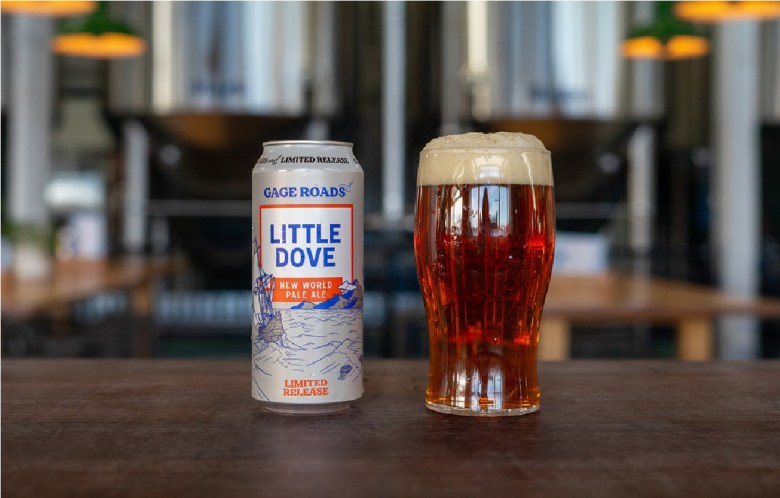 Good Drinks Australia has re-released old favourite beer, with the return of Gage Road Brew Co's Little Dove New World Pale Ale to taps and shelves.
Good Drinks Australia has re-released old favourite beer, with the return of Gage Road Brew Co's Little Dove New World Pale Ale to taps and shelves.  A top seller at last weekend’s GABS Festival Sydney was the delicious 6.5% Braupakt Blonde Ale collaboration brew between Germany’s oldest brewery, Weihenstephan and their Belgium neighbours, St Bernardus! The good news for beer connoisseurs is that it’s been restocked for GABS Brisbane and Melbourne this June.
A top seller at last weekend’s GABS Festival Sydney was the delicious 6.5% Braupakt Blonde Ale collaboration brew between Germany’s oldest brewery, Weihenstephan and their Belgium neighbours, St Bernardus! The good news for beer connoisseurs is that it’s been restocked for GABS Brisbane and Melbourne this June.  Dr Keith Villa, the creator of Blue Moon and founder of Ceria Brewing, joins me this week to talk about Blue Moon, the Craft Beer Industry, Ceria, Alcohol Free beers and more. Subscribe on iTunes to Audio version or Video version or Spotify or Google Play Download the MP3 File– Right Click and Save As […]
Dr Keith Villa, the creator of Blue Moon and founder of Ceria Brewing, joins me this week to talk about Blue Moon, the Craft Beer Industry, Ceria, Alcohol Free beers and more. Subscribe on iTunes to Audio version or Video version or Spotify or Google Play Download the MP3 File– Right Click and Save As […] 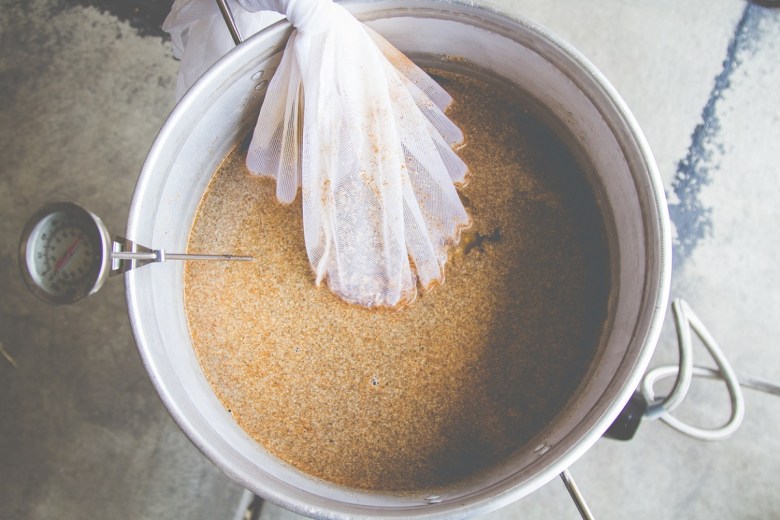 The two-stage competition will allow finalist homebrewers to collaborate with commercial breweries on their competition brew.
The two-stage competition will allow finalist homebrewers to collaborate with commercial breweries on their competition brew. A new wave of Asian American brewers is putting their heritage at the heart of their craft.
The post Redefining Craft Beer: Asian Americans Brewing Up Heritage appeared first on CraftBeer.com.
 This week I dive into the cleaning process and discuss some of the most popular cleaners used when brewing beer. Last week in Part 1, I explained why cleaning and sanitation is so important for beer and discussed environmental concerns such as where to locate your brewery. As I discussed in part 1, cleaning and […]
This week I dive into the cleaning process and discuss some of the most popular cleaners used when brewing beer. Last week in Part 1, I explained why cleaning and sanitation is so important for beer and discussed environmental concerns such as where to locate your brewery. As I discussed in part 1, cleaning and […] A fun way to explore a new destination is through its local beverage scene, and many areas are making this experience even easier with the creation of beverage trails.
The post Mixed Drinks: The Lure of Beverage Trails appeared first on CraftBeer.com.
 To the delight of many, Chuck Hahn has come out of retirement to start a brewery with his son, Scott.
To the delight of many, Chuck Hahn has come out of retirement to start a brewery with his son, Scott. 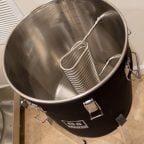 This week I dive into the very important topic of cleaning and sanitation for beer brewing and cover some of the basic terms and definitions. In part 2 I’m going to cover the cleaning process and strengths and weaknesses of different cleaners, and in part 3 I will cover sanitation and sanitizers. Why is Cleaning […]
This week I dive into the very important topic of cleaning and sanitation for beer brewing and cover some of the basic terms and definitions. In part 2 I’m going to cover the cleaning process and strengths and weaknesses of different cleaners, and in part 3 I will cover sanitation and sanitizers. Why is Cleaning […] To be a part of the craft beer scene in New Orleans is to be a part of the city’s vibrant culture of culinary delights, thoughtful drinks, deeply rooted music traditions, and an emphasis on socializing within the community.
The post Beer in a Cocktail Town: How Craft Breweries Have Enriched NOLA appeared first on CraftBeer.com.
 Marcus Englet, VP of the “world’s oldest brewery” will give the keynote speech at this year’s gala dinner.
Marcus Englet, VP of the “world’s oldest brewery” will give the keynote speech at this year’s gala dinner. This is the second in a series of posts each covering an aspect of brewing mixed-fermentation barrel-aged beers where my opinions have changed significantly since I wrote American Sour Beers 10 years ago. Each post will focus on our process, recipe, and results for one of the beers in the Sapwood Cellars Shipping Club (includes 6 bottles, for $146, cancel anytime) - sign-ups for the first box close May 5th! This post covers blending through the lens of Growth Rings 2023 (our blend of 1-, 2-, and 3-year barrel-aged sours). If you are closer to the brewery, May 10th and 11th I'll be doing a talk and vintage sour tasting including pours of Growth Rings 2021 and 2023!
As a homebrewer, my experience with blending was limited to a handful of batches. Over the last six years I've had a hand in blending more than 70 batches of barrel-aged sour beer. So, I thought it would be valuable to give my thoughts on the process, what I've learned to do, and not to do.
Setting Yourself Up For Success
You can't blend great beer if you don't have options. Creating variety starts on brew day and continues through fermentation and aging.
Malt Bills - More so for darker sours, it's good to have options for beers that have different flavors to pull from. Even for pale beers, having different grains (wheat, oats, rye, spelt, light caramel malt etc.), and starting gravities can be valuable for creating range.
Hopping Rates - As I discussed in my previous post, hopping rate plays a large role in acidity and "funky" aromatics. Bitterness itself can be a valuable flavor in a blend, it's a flavor present in most lambics, and too often missing from American sours.
Acidity - Having "Brett only" barrels is a good way to ensure you have beer available that won't be too acidic. When a barrel starts getting too sour, we'll often keg it so it is available for blending at a low level for beers that aren't sour enough.
Barrels - A blend of "new" and well-used barrels. Early on all of our barrels were first-use (to us). As a result many of our early releases were too woody, giving "lumber aisle" vibes. Most sour beers are light and delicate and too much oak can overwhelm. At the same time, it's good to retire barrels that aren't producing spectacular beer allowing you to bring in new characterful barrels (we currently have fresh gin, Madeira, PX Sherry etc. aging). If I was starting a new barrel program, I'd soak half of the barrels slated for pale beers with multiple changes of hot water to leach out oak flavor and tannins before filling.
Microbes - It is easiest if you have the same culture in all of the beers/barrels. In that case you don't have to worry about additional attenuation after packaging. For me, it's more valuable to have a variety of microbes for different acid levels and Brett profiles for more dynamic flavor options. As time has gone on we've split the difference, pumping in some of a favorite barrel to a fresh batch, but then going into various barrels with their own cultures. We'll also pitch additional microbes if a barrel isn't headed in a good direction at 6-12 months.
Ages - It can be helpful to have the same/similar beers of various ages so you can balance flavors. We've gotten better at judging which barrels just need more time, and which are headed in a bad direction and need to be dumped. That said, I don't have as much time to taste/monitor the barrels as I should and I still "miss" some good barrels leaving them in too long until they taste oxidized or off.
The Mechanics of Blending
Think about the goals before you start. What is the concept? What other ingredients are you adding after blending? What is the target volume? Sometimes it is good to just taste barrels for inspiration, but that can be overwhelming when you have dozens of barrels to select from. I try to set a general schedule before the year starts. It keeps me on track for seasonal ingredients, sourcing barrels for finishing, and utilizing our staff/tank time rather than bunching up releases. I tend to earmark barrels as "potential" candidates for a blend, ideally twice as many barrels as a blend would require.
From there, I go to our barrel-spreadsheet (more info). I filter for beers with enough age, appropriate bases, removing barrels that are already earmarked for other projects. Lots of releases overlap, say I fill five barrels with sour red and hope to get a two-barrel blend plain and a two-barrel blend with fruit. Hopefully I have an "orphan" barrel that was passed over from last year or another similar base that didn't fit in its blend available for variety. Then I start pulling nails and tasting to gauge my options. I note barrels that need more time and those that are running out of time. Hopefully that narrows down my choices to five barrels at most for a two or three barrel blend.
Then I pull larger samples of those barrels so I have enough beer for a few blends without having to go back and pull more. When possible, I try to create full-barrel blends, although we occasionally keg-off partial barrels for future blending stock. In the same way if a blend is missing a little something, I'll take a look through our kegs and see if there is an option that satisfies the need.
I usually break down my options by acidity. If two barrels are a bit too acidic and two are not acidic enough, I'll try blending my favorite from each camp together to see where that gets me. Then swap in the other if there is something that doesn't work. Once I get a solid blend, I might go hunting for a little something extra. For example we were just blending a sour red, and ended up with a little 3+ year-aged Vin de Cereale (strong sour red) as a low-percentage malt-booster bringing perceived sweetness and more oak.
In terms of the practicalities of blending, I usually use volume. Weight works, but I tend not to worry about extreme precision because the volume in each barrel can differ by 5-10% anyway. For each blend I start with an empty cup to avoid issues with tracking when you take a sip, dose in more and then don't really know the ratio.
Finally, I write down the winning blend. When possible, I come back and taste the blend on a fresh palate later, ideally with someone who wasn't involved in the initial blend (since that is how the majority of people drinking the beer will approach it).
Blending takes time and practice, but one thing that has been immensely helpful is blending with other people. Some of my favorite collabs are sensory rather than recipe-based. There isn't often much I get out of brewing a collab beer, instead we invite in other brewers to taste through our barrels and help select a blend, brainstorm adjuncts etc. Sam, Tim, and co. from Other Half helped blend Throwing Hearts. Jennings from Pen Druid came in to blend Life is Ridiculous. Mike Thorpe from Afterthought visited last week to blend an upcoming beer with hardy kiwi and New Zealand hops. We've done similar things on the stout side with Mike Saboe from Toppling Goliath and Eric Padilla from More/Open Outcry. Heck it's just great bringing in homebrew friends with good palates to help taste barrels, bounce ideas off... and just give me an excuse to pull samples!
Recipe: Growth Rings 2023
Barrel #16
Beer: Golden Sour (Pils, 2-row, Chit, Wheat Malt, .5 lbs/bbl Aged Hops, 1.056)
Age: 16 Months
Barrel: 5th-fill Pinot Noir American Oak
Culture East Coast Yeast Flemish Ale
Notes: Rubbery funk, medium acid, bright, good
Barrel #19
Beer: Rings of Light (2-row, Chit, Malted Wheat, Unmalted Oats, 40 IBUs in Whirlpool, 1.062)
Age: 8 months
Barrel: 4th-fill Chardonnay American Oak.
Culture: Omega Brett C and Yeast Bay Amalgamation
Notes: Less acidic, funky, bright fruit, rubbery
Barrel #20
Beer: Marylandbic (Pils, Unmalted Wheat, Chit, .5 lbs/bbl 2014 Celeia pellets, 1.045)
Age: 35 months.
Barrel: 2nd-fill Chardonnay American Oak.
Culture: Omega Brett C and Yeast Bay Amalgamation (plus a house culture that was a repitch of a repitch in primary)
Notes: Loamy, a touch stale, bright lactic acid.
Barrel #62
Beer: Belgian Pale (Pilsner, Wheat Malt, Vienna, 15 IBUs Sterling First Wort, 1.048)
Age: 27 months
Barrel: 2nd-fill Cabernet Franc French Oak
Culture: SARA Saison Bernice
Notes: Sprite, tart, but not highly acidic.
Growth Rings is the rare bottle-conditioned sour that we didn't repitch with wine yeast, a good choice if you're looking to harvest bottle dregs!
Tasting Notes: Growth Rings 2023
(My personal notes from a few months ago)
Smell - Citrusy nose, apricot, hay, bright and fresh. Missing that big rubber that is present in most great lambics.
Appearance - Pale gold, clear, lots of bubbles, thick head, good retention. Great lacing.
Taste - Delicate acidity. Lemon, apricot, just a touch of rubber.
Mouthfeel - Snappy carbonation, medium-light body. Lighter bodied than a classic Gueuze.
Drinkability - In terms of drinkability, it’s my favorite recently. Lively, complex… but it isn't as gueuze-y.
Changes for Next Time - It has sort of a barrel-aged saison quality more than gueuze. Maybe that fresher whirlpool hop character from Rings of Light… that said I really like the result.
 Michael Tonsmeire from Sapwood Cellars joins me this week to talk about very high gravity barrel aged stouts. Subscribe on iTunes to Audio version or Video version or Spotify or Google Play Download the MP3 File– Right Click and Save As to download this mp3 file. Your browser does not support the audio element. Topics […]
Michael Tonsmeire from Sapwood Cellars joins me this week to talk about very high gravity barrel aged stouts. Subscribe on iTunes to Audio version or Video version or Spotify or Google Play Download the MP3 File– Right Click and Save As to download this mp3 file. Your browser does not support the audio element. Topics […] 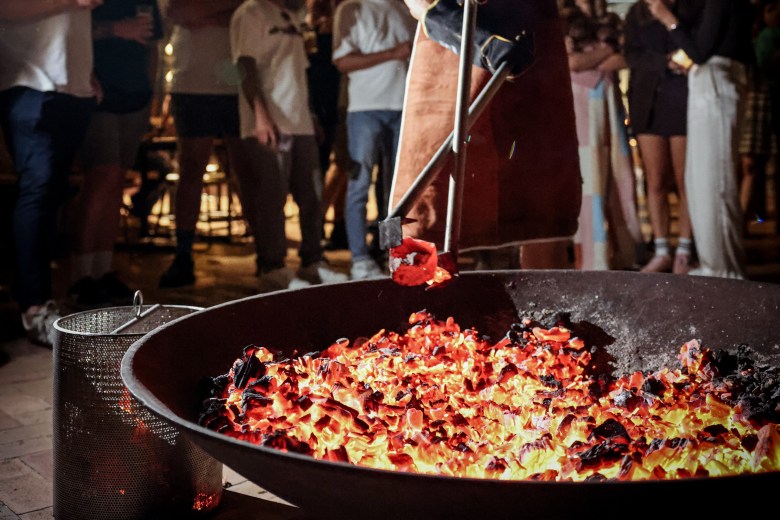 The annual event honours ancient stone brewing traditions while crafting the limited-release Stone Beer.
The annual event honours ancient stone brewing traditions while crafting the limited-release Stone Beer. The longer I brew mixed-fermentation beers, the more I appreciate just how important the hopping rate is. Controlling lactic acid production by inhibiting lactobacillus is hops' most well-appreciated function in sour beers. Hop compounds become more effective at inhibiting Lactobacillus as the pH drops, creating a natural "limit" on their lactic acid production. What it took me a long time to appreciate was how much hop compounds (beyond IBUs) lead to a greater expression of what I think of as classic Brett "funk."
When Scott and I began the mixed-fermentation program in 2018-2019, generally our issue was beers not souring enough. I started pulling levers (lower hopping rates, higher mash temps, less attenuative primary strains etc.) By 2020-2021, we were having excessive acid production... Most non-fruited beers were dropping to a firmly-acidic 3.1-3.3 pH, while fruited beers were often difficult to drink in quantity at 3.0-3.1 pH with some dipping to "obnoxiously acidic" high-2s.
Fruit contributes simple sugars, which Lactobacillus love, and at the same time dilute the hop compounds in the beer. This can cause a precipitous pH drop. With so much beer already in barrels, my first maneuver was to begin dosing alpha acids into the beer along with fruit when there was already enough acid. We started with reduced iso-alpha-acids (e.g. tetralone/hexalone), but have moved onto Hopsteiner Alpha Extract 20% since it doesn't add perceived bitterness. About .1-.2 g per gallon stops acid production for our bacteria. These products don't significantly change the flavor or add additional aromatic complexity. As a side benefit, they enhance head retention. A small dry hop at this stage would be another option if you wanted stop acidification and add hop aromatics.
At this point we started upping the aged hop rate, or aiming for higher IBU targets when using fresh hops (~15-20 IBUs). At the same time (~2021) Scott and Ken (our head brewer) wanted to try barrel-aging more aromatically hoppy beers... I was resistant. I love hoppy-sour beers, I did a whole talk about them at the 2016 National Homebrewers Conference. Generally my approach had been to make sure the hops go into the beer as close to serving as possible (e.g., dry hop a barrel-aged sour after aging, brew a quick-turn hoppy Brett saison, add a whirlpool addition after kettle souring). I'd tasted too many barrel-soured IPAs and pale ales from great breweries that smelled like "old hoppy beer." That said, Ken and Scott convinced me! At our scale it is a relatively low risk to divert a few barrels of pale ale to see what happens.
We're already "aggressive" with our measures against oxygen pick-up (purging barrels with carbon dioxide before filling, purging the barrel-tool between each fill, purging the bottles before filling etc.), but when we fill barrels with pale ale wort we pull out all the tricks. Most importantly, we selected barrels that could be refilled without rinsing, leaving several gallons of "house culture" at the bottom of each. Our goal was to start the secondary fermentation as quickly as possible to protect the delicate hop compounds. I was amazed how good the resulting beer tasted!
What has really intrigued me is that the hoppier bases have almost universally produced finished beers I'd describe as more Brett-forward (earthy, funky, fruity, horse blanket). What I don't know is why! In American Sour Beers I cited research that Brett can free glycosides in hops, so that could explain the fruity. Maybe hops are just inhibiting Lactobacillus, giving the Brett a healthier environment (in lambics Brett tends to thrive before Pediococcus dramatically lowers the pH). Maybe I'm just being fooled and higher hopping rates (aged or fresh) are adding key compounds that I associate with the "funk" in a Cantillon, Orval (and many of my favorite American mixed-ferms)! These days our typical hopping rate is .5 lbs/bbl of aged hops at the start of the boil, and .5 lbs/bbl or fresh low alpha-acid hops in the whirlpool.
Barrels of Rings is one of the bottles included with the first shipment of the Sapwood Cellars Shipping Club. It started as Rings of Light, brewed summer 2022, racked into barrels after primary fermentation, but before dry hopping. After 10 months of aging, we transfer directly from the two wine barrels into our blending tank (purged with 5.5 pounds of our selected Citra Cryo already in there). We agitated/roused and allowed to settle for a couple days, dropping the hops. Then we primed with sugar and rehydrated wine yeast (as we do for most of our barrel-aged sours) and partially carbonated the beer. As with the barrel fill, we're relying on CO2 purging of the bottles and the rapid refermentation to scavenge oxygen and preserve hop aromatics.
Recipe: Barrels of Rings
OG: 1.063
65% Briess Brewer's 2-row
14% Great Western Malted White Wheat
13% Grain Millers Flaked Oats
8% Best Chit Malt
IBUs: 40
.5 lbs/bbl Meridian @ Whirlpool (212F)
1 lb/bbl New York Cascade @ Whirlpool (180F)
Bravo Salvo Hop Extract @ Whirlpool (180F)
Fermentation with Omega Cosmic Punch (the barrel sheet below is incorrect)
FG (Primary) 1.022
Brewed 8/5/22. Barrels filled 8/11/22
Barrel #6: Fifth-fill Chambourcin red wine barrel that previously held our original barrel-aged pale ale, Measure Twice. That barrel was started with dregs from our collab with Free Will (Erma Extra), but along the way it was filled with bases that had dregs in primary from various American saisons (Casey and Holy Mountain).
Barrel #125: Second-fill Chardonnay white wine barrel that previously held a cider fermented with the Bootleg Biology Biology Mad Fermentationist Saison (plus we added the dregs from a stellar bottle of Barrique Wet Hop Reserve after filling).
6/21/23 116 gallons of beer from the two barrels transferred onto 5.5 pounds of 2022 Citra Cryo. 1.5 oz/gallon.
Carbonated to 2.05 vol, reyeasted with Premier Cuvee (rehydrated on a stir-plate with StartUp Nutrient), primed with enough glucose to add 1.1 vol of CO2 (~3.1 vol total in bottle).
Final pH: 3.65
Final Gravity 1.009
7.1% ABV.
Tasting Notes: Barrels of Rings
(My personal notes from a few months ago)
Smell - Nice blend of citrus (orange) and earthy-Bretty-funk. Still really fresh, no oxidative or old-hop aromatics. Really varied nose with a little pine sap, hay, and melon. Another hoppy base that got funkier than most of our bases.
Appearance - Big dense white head, good retention. Light haze, very pale yellow. Attractive.
Taste - Light lemony tartness, but not sour-sour. Very saison-y. Some bitterness, but it doesn’t clash with the light bitterness.
Mouthfeel - A touch of astringency. Great sptrizy carbonation. Medium-light body.
Drinkability - Really nice. The bitterness does give it a different impression than a classic low-bitterness sour base. More saison-like.
Changes for Next Time - Really good, not much to change on this one. Gin barrels would be fun.
When visiting Epochal Barrel Fermented Ales in Scotland last year I was blown-away by how by how good (owner/brewer) Gareth Young's wild ales were aged on whole hops in the barrels for the entire secondary fermentation. I really enjoyed the first beer we did with it, Violet You're Turning Violet (Mosaic in the barrel, finished with a blend of wild and cultivated blueberries). It seems like a good option especially if you want variety in the hop intensity of a base, e.g., start with a more moderate hopped base and add hops to some barrels for blending options.
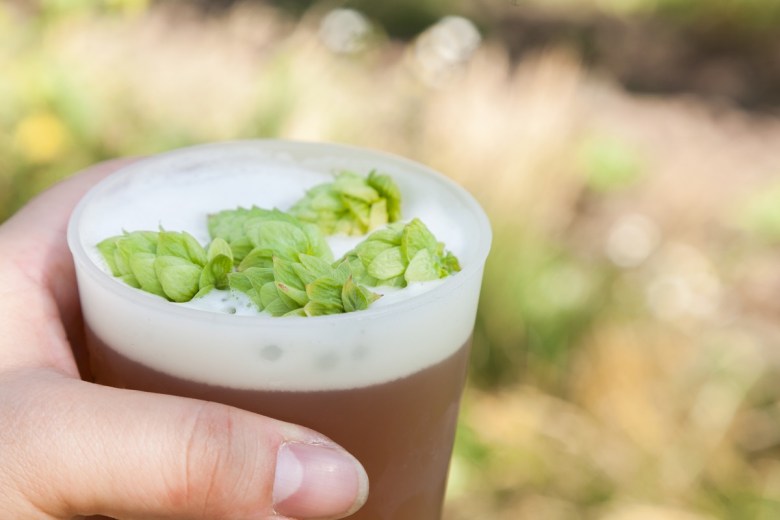 Breweries from across the country are celebrating the annual Australian hop harvest with hop festivals and fresh brews.
Breweries from across the country are celebrating the annual Australian hop harvest with hop festivals and fresh brews. 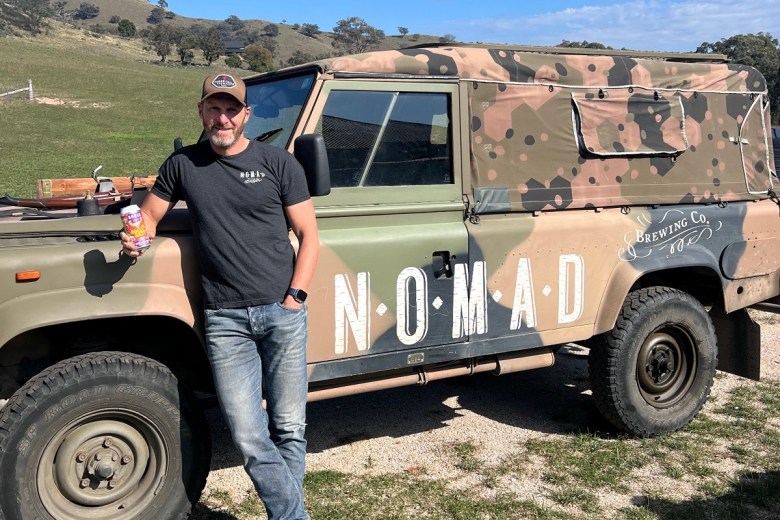 Kerrie Abba and Johnny Latta have put Nomad Brewing Co up for sale just shy of the Northern Beaches brewery's 10th anniversary.
Kerrie Abba and Johnny Latta have put Nomad Brewing Co up for sale just shy of the Northern Beaches brewery's 10th anniversary. - « Previous Page
- 1
- 2
- 3
- 4
- …
- 13
- Next Page »

